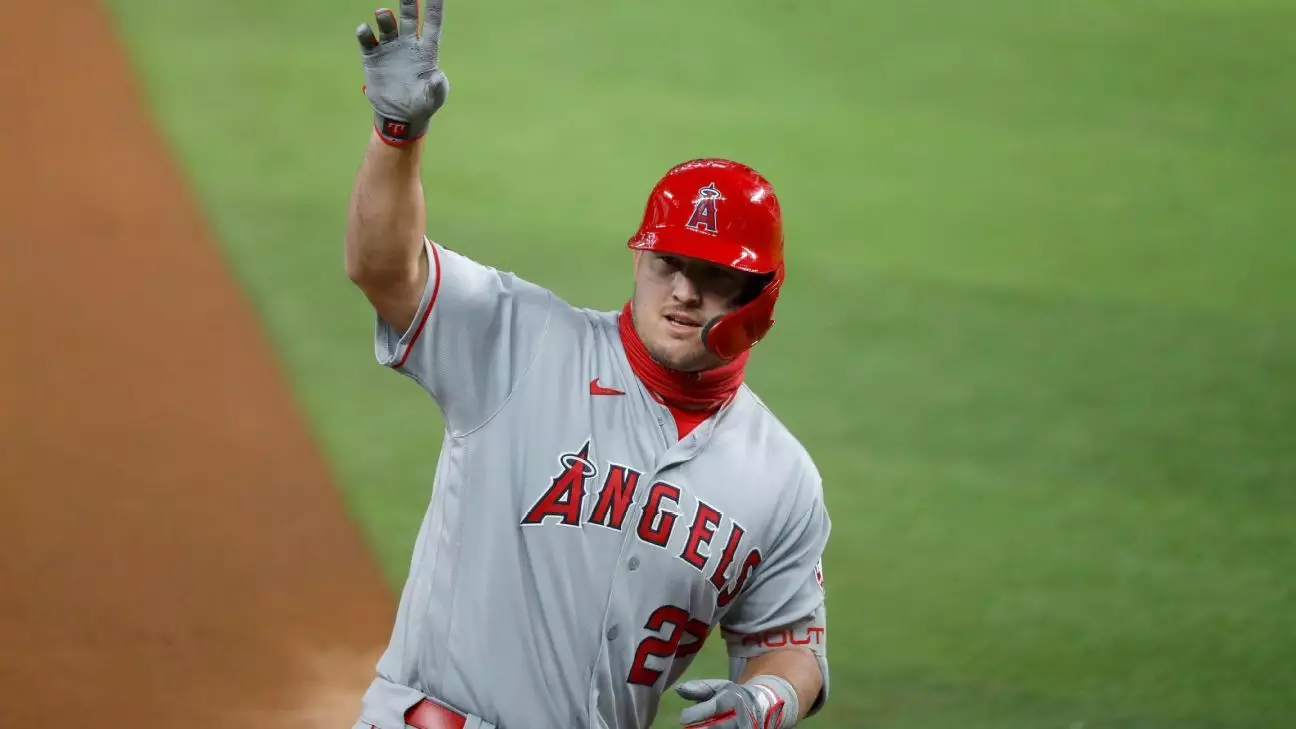The ongoing saga of Mike Trout, one of baseball’s brightest stars, has taken a turn as he navigates through recovery from multiple knee surgeries. Trout’s remarkable career, characterized by statistical excellence and formidable skills, now finds itself challenged by the realities of injuries. As we analyze Trout’s situation, it is essential to explore the implications of his potential positional transition and the impact on his overall career.
Trout’s recent experiences have been anything but easy. Undergoing two knee surgeries in a span of just a few months—first for a left meniscus repair in May, followed by a second operation in July—effectively ended his season early. His struggles with health have raised concerns that extend beyond the 2023 season, as he has averaged a mere 66.5 games played per year over the last four seasons. This sharp decline has led to speculation about the sustainability of his role as a center fielder, a position in which he has excelled for most of his career.
The 33-year-old athlete openly acknowledges the possibility of moving to a corner outfield position or even taking on a designated hitter role to prolong his career. “Everything’s on the table,” he stated, reflecting a willingness to adapt. This adaptability could mirror a broader trend in baseball where seasoned players transition to less demanding positions as they age or face injury-related concerns. This pragmatic approach is vital not only for Trout’s longevity but also for the Angels’ future roster configurations.
As Trout prepares for a rehabilitation phase that may involve more than just recovering physically, the discussions surrounding his position will undoubtedly be a central theme in the offseason. His acknowledgment that “there’s definitely going to be some conversations” indicates an awareness that change is necessary. The reality is clear: teams are increasingly requiring players to maximize their versatility, and Trout may need to embrace a new identity.
Interestingly, Stockton-born Trout has significant history in left and right field. During the early stages of his career, he performed admirably in these roles; however, he has since committed to center field responsibilities, leading to a notable decline in his games as a designated hitter. With Trout’s career batting average significantly higher in regular play compared to his time as a DH, one cannot overlook the psychological aspect of these roles—his reluctance to remain confined to a DH spot could impact not only his performance but also his overall approach to the game.
A statistical analysis of Trout’s performance unveils further insights into his potential future. In a limited 2023 season, he managed a batting average of .220 and an OPS of .541. Such numbers, emblematic of his struggles this year, starkly contrast with his overall career figures—a .299 batting average with an impressive OPS of .991. These metrics are not only evidence of his diminished physical capacity but may also reflect an evolving approach he must adopt.
Given Trout’s illustrious past, the question arises: how does a player of his caliber adjust to diminished returns? Acknowledging his current state, he expressed optimism about his recovery, stating he feels “great” and is back to swinging within days of rehab. Emphasizing the need for strength-building and routine establishment, Trout’s focus appears to straddle a fine line between regaining form and acknowledging that his career trajectory might not resemble the golden standards he once set.
As the offseason approaches, the stakes for both Trout and the Angels are undeniably high. Signs point to unavoidable conversations regarding his role on the team, and adjusting expectations may become essential for success going forward. Trout’s legacy cannot overshadow the need for strategic planning; balancing the player’s individual aspirations with practical team objectives will serve as a litmus test for the front office’s decision-making capabilities.
Mike Trout’s journey is a testament to the challenges athletes face when grappling with injuries and the natural evolution of their careers. While the future remains uncertain, one thing is clear: adaptability and foresight will be critical in crafting the next chapter of one of baseball’s all-time greats. The conversations ahead will not just shape Trout’s career but could influence the entire landscape of how teams utilize aging stars in the pursuit of championship success.


Leave a Reply